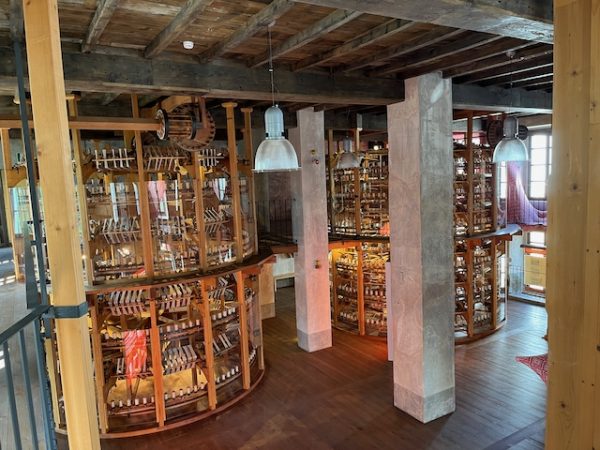Jet Lag and an Overdue Installment
This post went out to subscribers to my Substack newsletter on July 13. Check out all the posts, including ones from the archives not reposted here, and subscribe here.
The term “jet lag” is younger than I am, dating back to roughly 1966. Whoever coined it wasn’t yet talking about flying 11 hours through eight time zones, which is what I did over the weekend. (Having learned my lesson, I altered my original itinerary through Amsterdam and went Heathrow to LAX, which gave me a nice day in London.) And I hadn’t even gotten over my L.A.-to-Europe jet lag when I returned after two weeks. Must be getting old. Older than jet lag…
That’s my sorry excuse for not getting a newsletter out this weekend or even on Monday.
While in Italy, I made this video at the Filatoio Rosso di Caraglio, which I wrote about in The Fabric of Civilization.
There are two different machines: one to twist silk filaments into strong silk thread and a second one to load those finished threads onto spindles for transport. Here they are in the museum.

While researching The Fabric of Civilization I visited three different museums that feature these machines. Here’s a video I shot at Civico museo setificio Monti in Abbadia Lariana, where the throwing machine dates to 1818, making it relatively recent.
There’s also an excellent museum, the Civico Museo della Seta Abegg, in Garlate, not far from Como on a different finger of the lake that splits at Bellagio.
I went back to Caraglio because I’m going to try writing some children’s books about textile history, starting with one set there. The books would feature fictional child protagonists and stories but historical facts.1 It’s amazing how much you realize you don’t know when you move from nonfiction to fiction and have to flesh out a setting. Even though I’d supposedly done the research, I realized how little I knew about exactly what life was like in these mills. Silk cocoons are harvested in the spring and summer and the filaments need to be reeled off as soon as possible. I knew this when I was writing The Fabric of Civilization—it comes up in discussions of incremental Chinese innovations—but hadn’t thought about the implications for the labor force in Italian mills. The maestre who expertly reeled the filaments were working very intensely but only a few months a year. The mills were a supplement to agricultural labor.
1 I might, however, try a purely nonfiction biography of Agostino Bassi.